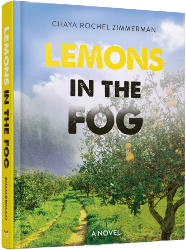Rebecca Dinerstein Knight’s new novel, Hex, is a closed-system terrarium of a book. Contained and bewitching, Hex is a love letter, a diary, a scientific study of relationships and desire.
The novel opens with upheaval: Nell has just broken up with her boyfriend, Tom, moved from the Upper West Side to Red Hook in the far reaches of Brooklyn, and a woman in Nell’s lab has died from exposure to thallium causing Nell to lose her place at Columbia. A PhD candidate in biology studying poisonous plants and their antidotes, Nell is now directionless, far from her friends and disconnected from her mentor, Joan. She fills three notebooks for Joan with a self-reflective, self-effacing account of her post-expulsion life. In her observations, she personifies her plants and plantifies her people in incisive descriptions of their behaviors and quirks.
Having stolen seeds from her now defunct lab, Nell is determined to neutralize her poisonous plants. She wants to draw out their inner anti-toxin, searching for what she calls a “harm/unharm pairing.” And pairs, the way they motivate and destroy, drive Nell’s story. The novel begins: “I am a woman who wakes up hungry. Tom touched only coffee till noon,” Nell defined in relation to Tom. Joan and her husband Barry, who were part of the committee that expelled Nell, define and defy one another too, as do Mishti — Nell’s gorgeous and charismatic friend — and Mishti’s boyfriend Carlo. These three pairs interact and react, dissolve and rearrange, with everyone’s identities clarified for Nell by their shifting relationships to one another. Joan and her relationships to others, in particular, fascinate Nell. Joan is captivating. Joan is aspirational. Joan is toxic. Nell is in love.
“My biggest loss is you: my chime, my floorboard,” Nell writes to Joan after being expelled. “You are my night milk. You are my unison.” This concise novel is filled with these oddball turns of phrase and gratifying metaphors. Hex’s quotable, polished whimsy would be tiring in the hands of someone less skilled than Knight, but there’s a lush darkness here, and her tight, poetic language bolsters the novel’s intellectual New York hipster cool to become something more verdant, more unexpected. After a tense, charged holiday party, Nell writes to Joan, “The night soon ended. We found our coats in the pile. Nobody could bear to be in the same room anymore, and we’d eaten too much cheese and needed to use our own bathrooms.” Sentences take startling turns, and convention is paired with oddity, style with dirt.
Hex, tender and enchanting, tumbles to a close, and Nell’s notebooks, in which she lists the properties of plants alongside the properties of people, ultimately succeeds as a catalogue of desire, dependency, and attraction. No one is an island, Nell’s observations show. Or maybe a more apt metaphor would be to say that no one is a plant alone in a tub on the bare floor of your empty Red Hook apartment.
Russell Janzen is a New York-based writer and a dancer with the New York City Ballet.



